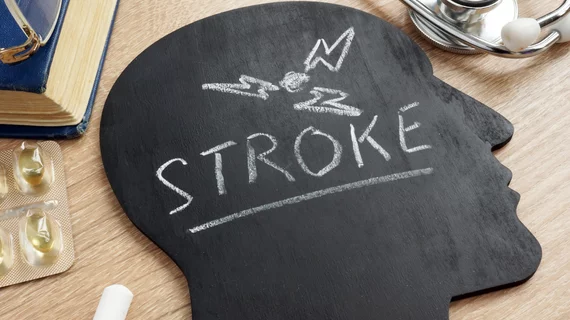Supplemental, short-protocol MRI a cost-effective addition for stroke patients in the ED
Supplemental, short-protocol MRI appears to be a cost-effective means of further assessing certain stroke patients in the emergency department, according to a new analysis published Saturday.
Head computed tomography is the go-to imaging modality for patients suspected of suffering such an interruption in bloody flow to the brain. However, noncontrast CT can sometimes miss the early signs of minor strokes, German scientists wrote in European Radiology.
University Hospital, LMU Munich, investigated the use of an emergency MRI to detect small ischemic lesions and increase diagnostic confidence after a negative CT scan. The strategy appears to be worthwhile, potentially lowering healthcare spending in the emergency department while adding quality-adjusted life years.
“In this setting, the cost savings due to a lower rate of major strokes and gains in effectiveness by application of preventive treatment may by far outweigh the additional costs of supplemental short-protocol MRI subsequent to negative head CT in the emergency situation,” Daniel Puhr-Westerheide, with University Hospital’s Department of Radiology, and co-authors concluded.
For the study, researchers used an analytical model to help distinguish whether patients needed no additional imaging or a short MRI after the initial CT. It assumed that providers missed diagnosing a minor stroke during the initial evaluation 40% of the time. Puhr-Westerheide et al. based their analysis on their own previously published, single-center investigation exploring the use of an ultrafast MRI protocol. That prospective analysis included nearly 550 patients presenting at an ED with acute, nontraumatic neurological symptoms.
Their model simulated a follow-up of 30 years after initial assessment, while willingness to pay was set at $100,000 per quality-adjusted life years. They labeled additional short-protocol MRI as the ideal strategy, logging overall costs of $26,304 compared to $27,109 for CT only. Those in the CT model gained 14.25 adjusted life years, compared to 14.31 for the MRI strategy. And MRI remained the “dominant” strategy” when running wide variations of different scenarios, including assuming “disproportionally” high costs fort the supplemental scan.
“Our results indicate that additional investment in short-protocol MRI examinations in the emergency setting does not only increase the detection rate of minor strokes, but can be regarded as a highly cost-effective, dominant strategy by preventing major strokes with consecutively high costs,” the authors advised.

